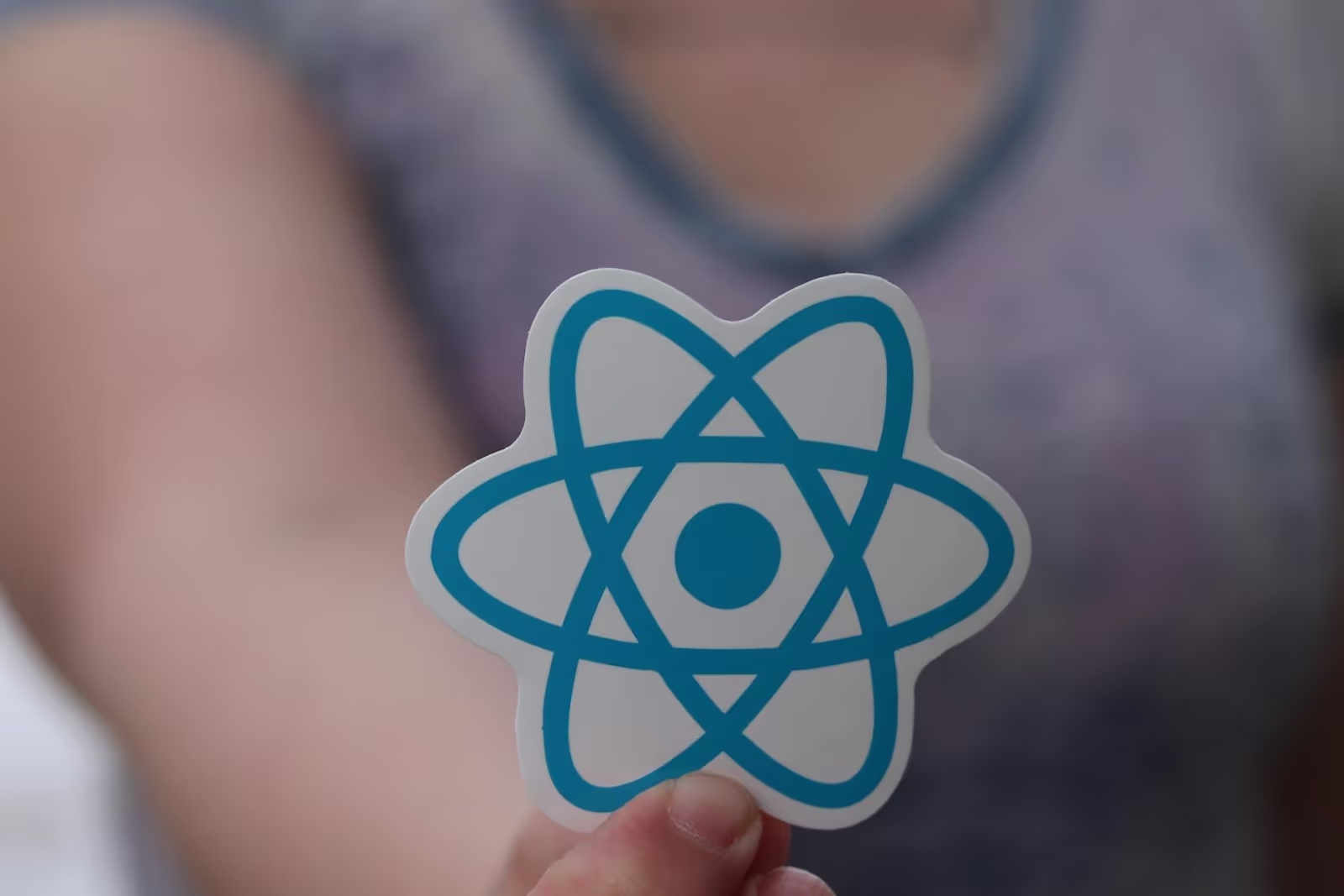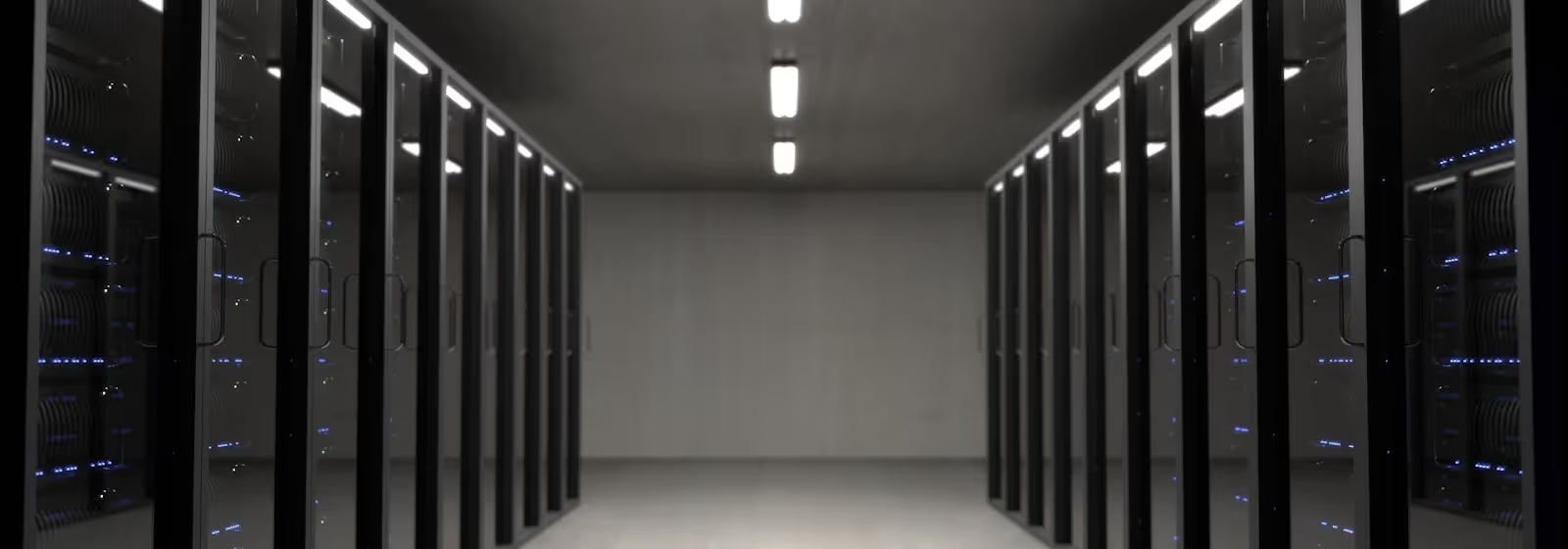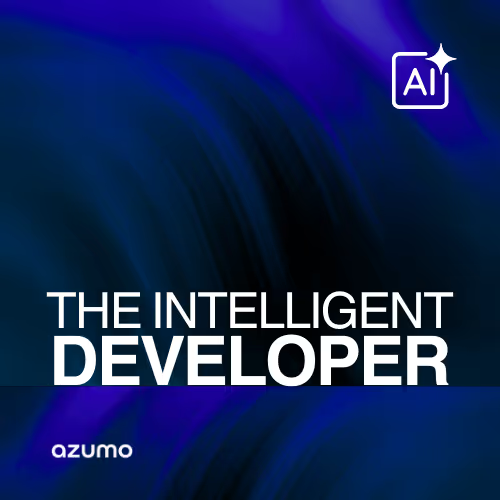AI Intelligence Briefing - October 8, 2025

AI Enterprise Deployment - Modern data center infrastructure powering artificial intelligence systems
Executive Summary
The first week of October 2025 marks a watershed moment in enterprise AI deployment, with major strategic partnerships and infrastructure investments reshaping the competitive landscape. OpenAI’s AgentKit launch democratizes multi-agent development, while AMD’s historic 6-gigawatt GPU deal breaks NVIDIA’s infrastructure monopoly. Anthropic secures its largest enterprise deployment ever with 470,000 Deloitte professionals, Stellantis elevates AI from pilots to company-wide deployment with Mistral AI, and the European Commission launches dual strategies to accelerate AI adoption across industry and science. Meanwhile, Google DeepMind’s CodeMender introduces autonomous code security patching, and Salesforce reports 233% growth in AI agent usage. These developments signal the transition from AI experimentation to production-scale deployment across global enterprises.
Top AI Stories This Week
1. OpenAI Launches AgentKit: Democratizing Multi-Agent Development

AI Agent Development Platform - Software development and artificial intelligence integration
Announced: October 6, 2025 | OpenAI | TechCrunch
OpenAI unveiled AgentKit at DevDay 2025 on October 6, introducing a comprehensive platform that enables developers to build, manage, and deploy AI agents through visual drag-and-drop interfaces without extensive coding expertise.
Key Components:
- Agent Builder: Visual canvas for composing multi-step and multi-agent workflows with drag-and-drop nodes, custom tool connections, and configurable guardrails. Available in beta.
- ChatKit: Embeddable chat interface for integrating conversational AI experiences into applications. Generally available.
- Evals for Agents: End-to-end assessment tools for agentic workflows with automated grading to identify performance gaps. Generally available.
- Connector Registry: Centralized administrative hub for managing connections across OpenAI products
- Open-Source Agents SDK: Simplified orchestration of multi-agent workflows, replacing the experimental Swarm SDK
Strategic Implications:
AgentKit represents OpenAI’s response to the enterprise demand for production-ready AI agents revealed by Gartner’s prediction that 40% of enterprise applications will embed AI agents by 2026. By lowering the technical barrier through visual development tools, OpenAI positions itself to capture the mainstream enterprise market beyond technical early adopters.
The platform’s architecture addresses three critical enterprise requirements: governance through configurable guardrails, evaluation through automated testing frameworks, and scalability through standardized deployment patterns. Organizations that struggled to move agents from prototype to production due to technical complexity can now implement agent workflows using familiar visual design patterns similar to enterprise workflow automation tools.
The open-source SDK signals OpenAI’s recognition that vendor lock-in concerns inhibit enterprise adoption. By providing open-source orchestration capabilities, OpenAI allows organizations to build portable agent architectures while maintaining tight integration with OpenAI’s commercial offerings.
2. AMD Breaks NVIDIA’s Infrastructure Monopoly with 6-Gigawatt OpenAI Deal

GPU Infrastructure - Enterprise data center with server racks and computing hardware
Announced: October 6, 2025 | AMD | OpenAI | CNBC
AMD and OpenAI announced a landmark partnership on October 6 to deploy 6 gigawatts of AMD Instinct GPUs over multiple years, representing tens of billions of dollars in annual revenue and fundamentally challenging NVIDIA’s dominance in AI infrastructure.
Deployment Timeline:
- 2026 H2: Initial 1-gigawatt deployment of AMD Instinct MI450 GPUs
- Through 2028+: Scaling to 6 gigawatts across multiple AMD Instinct GPU generations
Financial Structure:
AMD issued OpenAI a warrant for up to 160 million shares of AMD common stock, allowing OpenAI to acquire approximately 10% equity stake. The warrant vests in tranches tied to: - Deployment milestones (1 GW, scaling to 6 GW) - AMD share price targets - OpenAI technical and commercial milestones enabling AMD deployments at scale
Market Impact:
AMD shares surged 24% to $203.71 on the announcement, adding $63.4 billion in market capitalization in a single day.
Strategic Implications:
This partnership fundamentally alters the AI infrastructure competitive landscape. NVIDIA has maintained near-monopoly control over AI training and inference infrastructure, enabling premium pricing and supply constraints that limited enterprise AI deployment velocity. AMD’s 6-gigawatt commitment provides the scale necessary to establish credible competition.
The equity-linked financial structure is particularly strategic. By giving OpenAI up to 10% ownership, AMD aligns long-term incentives while reducing OpenAI’s upfront capital requirements. The milestone-based vesting protects AMD from overcommitment while ensuring OpenAI’s technical teams invest fully in optimizing for AMD hardware.
For enterprises, this development promises increased infrastructure competition, potentially reducing GPU costs and improving availability over the next 18-24 months. Organizations planning large-scale AI deployments should anticipate multi-vendor GPU strategies becoming standard practice, requiring software stacks that abstract hardware dependencies.
The 2026 H2 timeline for initial deployment is significant—it provides a clear horizon for when AMD infrastructure will be production-ready at scale, allowing enterprises to plan procurement cycles accordingly.
3. Anthropic Secures Largest Enterprise Deployment: 470,000 Deloitte Professionals

Enterprise AI Collaboration - Professional business team working together in modern office
Announced: October 6, 2025 | Anthropic | CNBC
Anthropic and Deloitte announced on October 6 the expansion of their partnership to deploy Claude AI across Deloitte’s global workforce of more than 470,000 professionals, marking Anthropic’s largest enterprise deployment to date.
Partnership Components:
- Global Deployment: Claude AI accessible to all 470,000 Deloitte employees across its global network
- Claude Center of Excellence: Dedicated team of trained specialists developing implementation frameworks, sharing best practices, and providing technical support
- Certification Program: Formal training to certify 15,000 Deloitte professionals on Claude capabilities and deployment methodologies
- Custom Personas: Tailored Claude configurations for different employee groups including accountants, software developers, consultants, and auditors
- Industry Solutions: Co-created AI solutions with built-in compliance features for regulated industries including financial services, healthcare, life sciences, and public sector
Deployment Timeline:
Rollout of different Claude personas across employee groups will occur over the next several months, with the certification program running in parallel.
Strategic Implications:
The Deloitte partnership represents a strategic inflection point for enterprise AI adoption. By embedding Claude across one of the world’s largest professional services firms, Anthropic gains both reference credibility and real-world feedback from diverse use cases spanning audit, tax, consulting, and advisory services.
Deloitte’s commitment to certify 15,000 professionals transforms the partnership from technology deployment to ecosystem development. These certified practitioners will implement Claude solutions across Deloitte’s client base, creating a multiplier effect that extends Claude’s enterprise footprint far beyond the direct deployment.
The focus on regulated industries is particularly strategic. Financial services, healthcare, and government sectors have resisted generative AI adoption due to compliance concerns. By co-developing solutions with built-in compliance features, Anthropic and Deloitte can address the primary blocker preventing AI adoption in these high-value sectors.
For enterprises evaluating AI deployments, the Deloitte partnership provides a validated implementation model. The Claude Center of Excellence represents a governance structure that organizations can replicate—establishing specialized teams, developing implementation frameworks, and creating formal certification programs to ensure consistent, compliant deployment at scale.
The custom persona approach demonstrates how enterprises can tailor general-purpose AI to specific roles while maintaining centralized governance. Rather than deploying identical AI assistants to all employees, organizations can configure different capabilities, guardrails, and integrations based on job function requirements.
4. Stellantis Elevates Mistral AI Partnership from Pilot to Enterprise-Wide Deployment

Automotive AI Integration - Modern car manufacturing and technology innovation
Announced: October 1, 2025 | Stellantis
Stellantis and Mistral AI announced on October 1 at Italian Tech Week in Turin the expansion of their 18-month partnership from pilots to company-wide AI deployment, embedding generative AI across automotive operations.
New Organizational Structures:
Innovation Lab: - Co-develops highly customized AI solutions for complex use cases - Embeds intelligence directly in Stellantis business processes - Focuses on sales and aftersales optimization - Empowers teams with AI-driven customer insights and personalized interactions
Transformation Academy: - Scales AI adoption across Stellantis globally - Accelerates progression from prototypes to production deployments - Launches new use cases delivering measurable business impact - Provides training and change management support
Technical Foundation:
Stellantis deploys a custom industrial version of Mistral’s large language models trained on domain-specific automotive data, enabling specialized capabilities for vehicle development, manufacturing optimization, and customer experience enhancement.
Context:
The partnership expansion follows Mistral AI’s €1.7 billion funding round led by ASML, positioning the French AI company as Europe’s leading foundation model provider for industrial applications.
Strategic Implications:
Stellantis provides a blueprint for scaling AI from experimentation to enterprise-wide deployment. The 18-month pilot phase allowed both organizations to validate use cases, demonstrate ROI, and build internal expertise before committing to company-wide rollout—a measured approach that reduces risk while building stakeholder confidence.
The dual structure of Innovation Lab and Transformation Academy addresses the two critical challenges in enterprise AI scaling: technical customization and organizational adoption. The Innovation Lab ensures AI solutions integrate deeply with automotive-specific workflows rather than providing generic capabilities, while the Transformation Academy addresses change management, training, and best practice dissemination.
For automotive and industrial enterprises, Stellantis demonstrates that competitive advantage comes from domain-specific AI rather than off-the-shelf solutions. By training Mistral’s models on proprietary automotive data, Stellantis creates differentiated capabilities that competitors cannot easily replicate.
The announcement’s timing—shortly after Mistral’s major funding round—suggests growing European commitment to developing AI infrastructure independent of U.S. hyperscalers. For multinational enterprises, this points toward emerging regional AI ecosystems with different compliance frameworks, data residency requirements, and technical capabilities.
5. European Commission Launches Dual AI Strategies to Accelerate Industrial and Scientific Adoption

European AI Strategy - Digital transformation and technology policy in the European Union
Announced: October 8, 2025 | European Commission | Digital Strategy
The European Commission released two comprehensive strategies on October 8 to position Europe at the forefront of AI adoption across key industries and scientific research, building on the April 2025 AI Continent Action Plan.
Apply AI Strategy:
- Objective: Accelerate AI use across Europe’s key industries and public sector
- Focus: Drive adoption and integration across industrial sectors, with emphasis on small and medium-sized enterprises
- Implementation: Apply AI Alliance coordination forum bringing together AI providers, industry, public sector, academia, social partners, and civil society
AI in Science Strategy:
- Objective: Position Europe at the forefront of AI-driven research and scientific excellence
- Focus: Accelerate AI adoption by European scientists across all disciplines
- Implementation: Resource for AI Science in Europe (RAISE) program providing infrastructure, tools, and training
Governance Framework:
The strategies operate within the EU AI Act framework, which entered force August 1, 2024, with full applicability by August 2, 2026. Key provisions already in effect include: - Prohibition on certain AI applications (effective February 2, 2025) - Governance rules for general-purpose AI models (effective August 2, 2025) - High-risk AI system regulations (effective August 2, 2026)
Strategic Context:
The dual strategy release coincides with the AI Act transition to enforcement, creating coordinated policy encouraging adoption while ensuring compliance and safety.
Strategic Implications:
The European Commission’s dual strategy represents a fundamentally different approach to AI policy than the United States or China. Rather than relying on market forces (U.S. approach) or state-directed deployment (China approach), Europe combines regulatory frameworks with public-sector-led adoption programs.
The Apply AI Strategy’s focus on SMEs addresses Europe’s industrial structure, where small and medium enterprises dominate key sectors. By providing centralized resources, implementation frameworks, and coordination mechanisms, the Commission aims to overcome the resource constraints that prevent smaller organizations from developing AI capabilities independently.
The Apply AI Alliance creates a governance structure for coordinating between AI providers, industry, and civil society—potentially establishing standards for responsible AI deployment before regulatory enforcement begins. For global enterprises operating in Europe, participating in this alliance provides early insight into emerging compliance expectations.
The AI in Science Strategy positions European research institutions to lead in AI-driven scientific discovery. Given the EU’s strength in life sciences, climate research, and fundamental physics, providing researchers with AI infrastructure and training could accelerate breakthrough discoveries in these domains.
For enterprises, the dual strategies signal that Europe will remain a significant AI market with distinct requirements. Organizations pursuing European expansion should prepare for: 1. Compliance with the AI Act’s risk-based framework 2. Participation in industry-specific AI adoption programs 3. Collaboration with government-supported AI initiatives 4. Data residency and sovereignty requirements
The August 2026 full enforcement deadline for high-risk AI systems creates an 18-month planning window for compliance preparation.
Quick Bytes

Code Security and Cybersecurity - Software security and vulnerability protection
Google DeepMind CodeMender Automates Security Patching: Google DeepMind announced CodeMender on October 6, an AI agent using Gemini Deep Think models to autonomously identify, patch, and validate software vulnerabilities. The system has already contributed 72 security fixes to open-source projects as large as 4.5 million lines of code. CodeMender takes both reactive approaches for new vulnerabilities and proactive code rewriting to eliminate entire vulnerability classes. [Google DeepMind, October 6, 2025]
Salesforce Reports 233% Growth in AI Agent Usage: Salesforce announced AI agent usage increased 233% in six months, with over 8,000 customers deploying Agentforce. Agent creation among first-mover companies surged 119% between January and June 2025, with customer service conversations led by agents growing 22x in H1 2025. Real-world deployments show 15% reduction in case handle time and 70% autonomous resolution rates. [Salesforce, October 2025]
Google DeepMind Genie 3 Generates Real-Time Interactive 3D Worlds: Following the August 5 announcement, Genie 3 continues to expand to select academics and creators as a limited research preview. The model generates interactive 3D environments at 720p resolution and 24 frames per second from text prompts, maintaining spatial consistency for several minutes with visual memory extending up to one minute. DeepMind positions world models as critical infrastructure on the path to AGI. [Google DeepMind, August 2025]
AI Infrastructure Spending Approaches $200 Billion Through 2028: New IDC research projects global AI infrastructure spending will surpass $200 billion by 2028, with organizations increasing compute and storage hardware spending by 97% year-over-year to $47.4 billion in H1 2024. Major tech firms plan $315 billion in capital spending on AI and cloud infrastructure in 2025, despite only 20% of businesses reporting earnings benefits from AI investments. [IDC, 2025]
Multimodal AI Market Projects 32.7% CAGR Through 2034: The multimodal AI market reached $1.6 billion in 2024 and is projected to grow at 32.7% CAGR through 2034. Gartner predicts 40% of generative AI solutions will be multimodal by 2027, up from just 1% in 2023, as models integrating text, images, audio, and video become the standard for enterprise applications. [Gartner, 2025]
Industry Impact Analysis
This week’s developments reveal four critical transformations reshaping enterprise AI strategy:
1. Infrastructure Competition Intensifies
AMD’s 6-gigawatt OpenAI partnership breaks NVIDIA’s near-monopoly on AI infrastructure, introducing meaningful competition that will reshape procurement strategies. The 2026 H2 delivery timeline creates a clear planning horizon for enterprises evaluating multi-vendor GPU strategies.
Key implications: - GPU costs likely to decline 15-25% over 18-24 months as competition increases - Multi-vendor infrastructure strategies becoming standard practice - Software abstraction layers essential for hardware portability - Procurement cycles should plan for AMD availability in late 2026
Organizations that locked into single-vendor GPU commitments in 2024-2025 may face cost disadvantages by 2027. Enterprises should negotiate flexibility into hardware procurement contracts to capture competitive pricing as it emerges.
2. Enterprise AI Moves from Pilots to Production
The Anthropic-Deloitte and Stellantis-Mistral AI partnerships demonstrate the shift from experimentation to enterprise-wide deployment. Both organizations spent 12-18 months in pilot phases before committing to company-wide rollout, validating the importance of measured scaling.
Success patterns emerging: - 12-18 month pilot phase to validate use cases and build expertise - Formal Centers of Excellence with dedicated specialists - Structured certification programs to ensure consistent deployment - Custom configurations for different employee groups or use cases - Co-development partnerships with AI providers for industry-specific solutions
Organizations still in experimentation phases should establish clear criteria for moving pilots to production, including ROI thresholds, governance frameworks, and change management requirements.
3. Visual Development Tools Democratize Agent Creation
OpenAI’s AgentKit represents the maturation of AI agent development from code-first to visual configuration. By providing drag-and-drop interfaces, pre-built connectors, and automated evaluation frameworks, OpenAI lowers barriers to agent development for non-technical business users.
This democratization creates strategic opportunities and risks: - Business units can develop agents independently, accelerating innovation - Decentralized development increases governance and security risks - Standardized evaluation frameworks enable quality control at scale - Visual tools attract business users previously excluded from AI development
Enterprises should establish governance frameworks before deploying low-code agent development tools. Without clear policies on data access, external integrations, and compliance requirements, democratization can create ungoverned shadow AI deployments.
4. Geographic AI Ecosystems Consolidate
The European Commission’s dual AI strategies, combined with Stellantis-Mistral AI partnership expansion and ongoing EU AI Act enforcement, confirm the emergence of distinct regional AI ecosystems. Europe is developing independent AI infrastructure, regulatory frameworks, and industrial partnerships separate from U.S. and Chinese ecosystems.
Regional considerations for multinational enterprises: - Europe: Compliance-first frameworks, public-sector coordination, SME focus - United States: Innovation-driven, market-led, hyperscaler dominance - China: State-directed, domestic infrastructure, vertical integration
Organizations operating across regions need abstraction architectures that accommodate different models, infrastructure providers, and compliance requirements while maintaining consistent application behavior.
What to Watch
AgentKit Adoption Velocity: Monitor how quickly enterprises adopt OpenAI’s visual agent development tools. Rapid adoption would signal readiness for low-code AI development; slower adoption might indicate persistent technical barriers or governance concerns requiring more sophisticated tooling.
AMD-OpenAI Technical Milestones: Watch for announcements of successful AMD Instinct MI450 deployments in late 2026. Technical challenges in this transition could delay the competitive impact on GPU markets, while smooth execution would accelerate multi-vendor strategies.
Deloitte Claude Deployment Results: Track Deloitte’s public communications about Claude deployment outcomes over the next 6-9 months. Success metrics from this 470,000-person deployment will influence enterprise AI adoption decisions across professional services and regulated industries.
EU AI Act First Enforcement Actions: With general-purpose AI model rules in effect since August 2025 and high-risk system regulations approaching in August 2026, monitor for the first EU enforcement actions. Early cases will establish precedents for compliance interpretation and penalty severity.
Enterprise AI ROI Evidence: With 80% of organizations still reporting no EBIT impact from AI investments despite massive infrastructure spending, watch for 2026 budget cycles. Enterprises that cannot demonstrate measurable returns may face significant AI budget cuts, while those with clear ROI metrics will capture increased funding.
CodeMender Open-Source Release: Google DeepMind indicated plans to expand CodeMender access to all software developers. If released as an open-source or freely available tool, this could transform software security practices by automating vulnerability remediation at scale.
Multimodal AI Production Deployments: With Gartner predicting 40% of generative AI solutions will be multimodal by 2027, monitor for early production deployments combining text, image, audio, and video. Success cases will accelerate adoption; high-profile failures could slow multimodal uptake.
About Azumo
As AI transitions from experimentation to production deployment, enterprises need partners with deep implementation expertise and proven methodologies for scaling AI systems responsibly.
Azumo’s AI engineering team specializes in:
- Agent Architecture Design: Build production-ready autonomous agents using proven incremental trust patterns and governance frameworks
- Multi-Vendor AI Strategy: Design and implement multi-model, multi-infrastructure architectures that optimize for performance, cost, and compliance across regional requirements
- Enterprise AI Scaling: Move AI from pilots to company-wide deployment with Centers of Excellence, certification programs, and change management support
- Compliance-First AI: Implement AI solutions for regulated industries with built-in governance, audit trails, and regulatory compliance
- Custom AI Solutions: Develop domain-specific AI capabilities using fine-tuned models and proprietary data integration
Our team has guided enterprises through successful AI transformations across financial services, healthcare, manufacturing, and professional services, delivering measurable business impact while managing risk.
Ready to scale your AI initiatives from pilots to production? Contact Azumo to discuss how we can help you leverage these breakthrough capabilities while navigating the complex landscape of vendors, regulations, and deployment strategies.
Sources
- Introducing AgentKit - OpenAI, October 6, 2025
- OpenAI launches AgentKit to help developers build and ship AI agents - TechCrunch, October 6, 2025
- AMD and OpenAI Announce Strategic Partnership to Deploy 6 Gigawatts of AMD GPUs - AMD, October 6, 2025
- AMD and OpenAI announce strategic partnership to deploy 6 gigawatts of AMD GPUs - OpenAI, October 6, 2025
- AMD stock skyrockets 23% as OpenAI looks to take stake in AI chipmaker - CNBC, October 6, 2025
- Anthropic Deloitte Partnership - Anthropic, October 6, 2025
- Anthropic lands its biggest enterprise deployment ever with Deloitte deal - CNBC, October 6, 2025
- Stellantis and Mistral AI Expand Their Collaboration to Accelerate Enterprise-Wide AI Adoption - Stellantis, October 1, 2025
- Keeping European industry and science at the forefront of AI - European Commission, October 8, 2025
- Commission launches two strategies to speed up AI uptake in European industry and science - European Commission, October 8, 2025
- Introducing CodeMender: an AI agent for code security - Google DeepMind, October 6, 2025
- Salesforce Shares Agentic Enterprise Index Insights for H1 2025 - Salesforce, 2025
- Genie 3: A new frontier for world models - Google DeepMind, August 5, 2025
AI Intelligence Briefing is published by Azumo. All information verified from official sources as of October 8, 2025.
